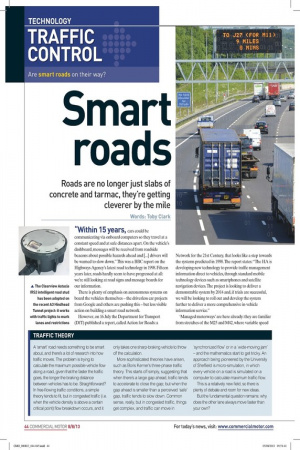TRAFFIC THEORY
Page 37

If you've noticed an error in this article please click here to report it so we can fix it.
A 'smart' road needs something to be smart about, and there's a lot of research into how traffic moves. The problem is trying to calculate the maximum possible vehicle flow along a road, given that the faster the traffic goes, the longer the braking distance between vehicles has to be. Straightforward? In free-flowing traffic conditions, a simple theory tends to fit, but in congested traffic (i.e. when the vehicle density is above a certain critical point) flow breakdown occurs, and it
only takes one sharp-braking vehicle to throw off the calculation. More sophisticated theories have arisen, such as Boris Kerner's three-phase traffic theory. This starts off simply, suggesting that when there's a large gap ahead, traffic tends to accelerate to close the gap; but when the gap ahead is smaller than a perceived 'safe' gap, traffic tends to slow down. Common sense, really, but in congested traffic, things get complex, and traffic can move in
'synchronized flow' or in a 'wide-moving jam' — and the mathematics start to get tricky. An approach being pioneered by the University of Sheffield is micro-simulation, in which every vehicle on a road is simulated on a computer to calculate maximum traffic flow.
This is a relatively new field, so there is plenty of debate and room for new ideas.
But the fundamental question remains: why does the other lane always move faster than your own?









































